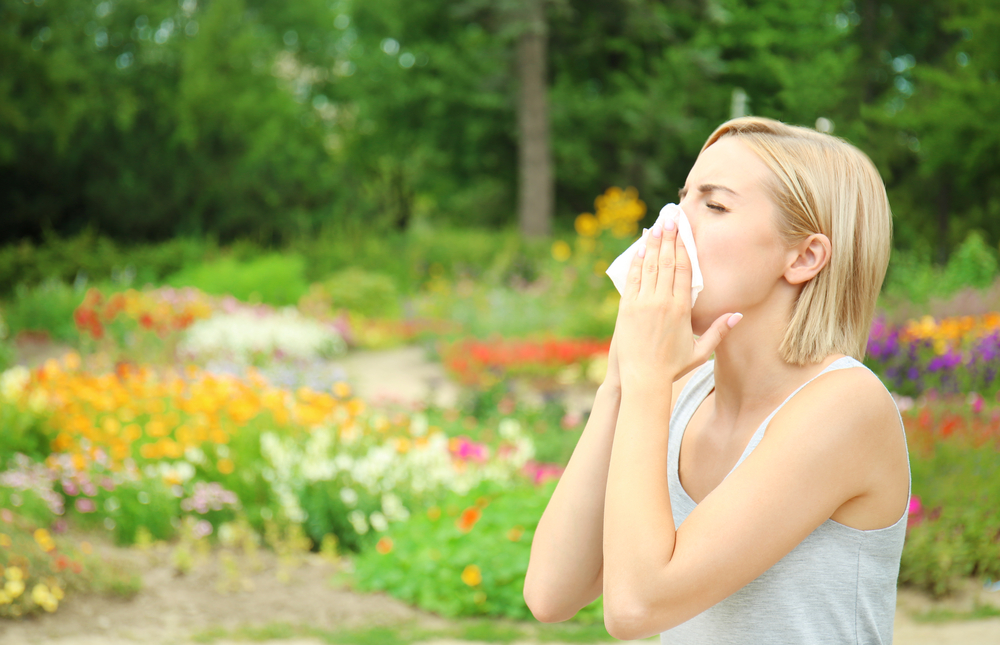Common Causes of Spring Allergies

For many people, spring is the allergy season. While others are enjoying the warm weather and beautiful blooms, allergy sufferers are struggling through that sneezy, itchy, awful feeling. Also known as hay fever, spring allergies are extremely common and typically harmless–but that doesn’t help you battle through the peak of allergy season.
Avoidance is the best way to combat spring allergies, but that means knowing what to avoid. Spring allergy symptoms can be caused by a variety of culprits that come with the season. Since you can’t stay indoors until summer (and you may even have summer allergies), let’s take a look at some of the most common causes of your spring allergy symptoms.
Common Causes of Spring Allergies
Tree Pollen. Trees are the first plants to pollinate each year, with pollen levels peaking in March and April (or even mid-February, if you live in south Alabama). Some trees, like our local pines, produce pollen you can see as a fine yellow powder that sticks to outdoor surfaces. These small, light-weight grains are easily blown in the wind–and right into your eyes, nose, and mouth.
Grass Pollen. Grass pollen typically peaks in mid-spring and can cause the worst of your allergy symptoms. Millions of people have a grass pollen allergy, especially to species like Bermuda, Fescue, and Rye. Because grass pollen can travel hundreds of miles on a breeze, you may be exposed to grasses that aren’t even in your location!
Mold. It’s not as common as pollen, but mold can still cause some miserable symptoms. During spring, moisture-rich air and warming temperatures create a perfect storm for mold spores. They can be found inside your home or outdoors in damp, dark places like compost piles, fallen leaves, bathrooms, and basements.
Insect Bites. Insects aren’t technically seasonal, but they do see a surge during springtime. Insect allergies can be extremely severe, even causing anaphylaxis (trouble breathing) and shock. Unlike other allergens, minor reactions usually occur on the skin as pain, swelling, redness, and itching. Bees, wasps, and fire ants are common spring stingers here on the Gulf Coast.
Let Urgent Care of Fairhope Address Your Allergy Needs
There are a few ways to combat springtime allergies. But when DIY leaves you drowning in sniffles and sneezes, Urgent Care of Fairhope is here to help. Stop by our convenient walk-in clinic to receive fast and friendly care that puts you on the road to relief. You can even check the waitlist online before you arrive!
Search our Blog
Recent Posts
Measles Guide for Parents: What You Need to Know
Recent measles outbreaks have many parents on high alert, and with good reason—measles is one of the most contagious viruses in the world. While it was once considered a routine childhood illness, modern medicine has [...]
Everything You Need to Know About the Fairhope Arts & Crafts Festival
In Fairhope, it doesn’t really feel like spring until we’re counting down the days to our favorite annual springtime event: the Fairhope Arts and Crafts Festival. Now in its 73rd year, this downtown celebration is [...]
The Facts on Fifth Disease: What Parents Need to Know
If your child has come home with rosy cheeks that seem more like a rash than a healthy glow, it might not just be the weather. Fifth disease, also known as “slapped cheek syndrome,” is [...]
Flu FAQs for Parents
Flu season is here, and if you’re a parent, you know how quickly it can turn your home into a germ war zone. We’ve seen an uptick in flu cases recently at Urgent Care of [...]
Mardi Gras 2025: Fairhope Festivities And Fun For All
It’s time to let the good times roll! The 2025 Daphne and Fairhope Mardi Gras season starts rolling soon with a full schedule of parades, balls, and festive celebrations along the Eastern Shore. It’s one [...]
Can the Cold Make You Sick? Winter Health Myths Revealed
As the chilly winds sweep through Fairhope and winter settles in along the Alabama coast, we at Urgent Care of Fairhope hear plenty of familiar warnings: "Don't go outside with wet hair!" or "Button up, [...]

